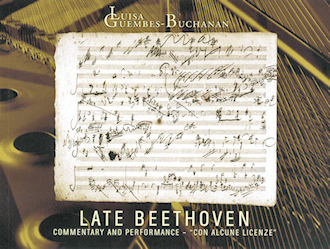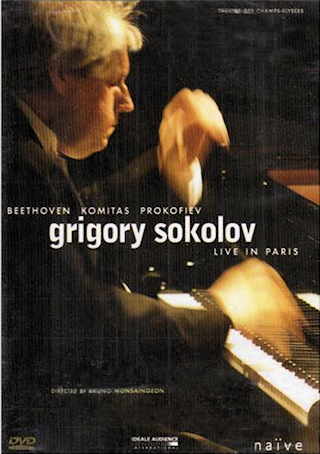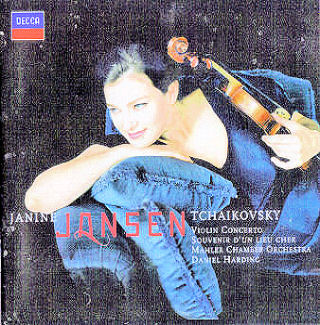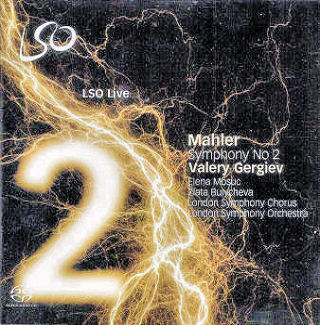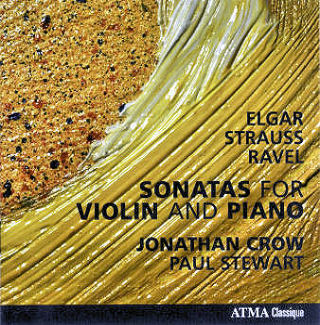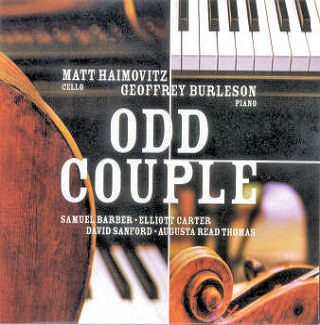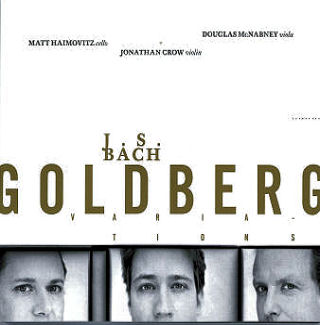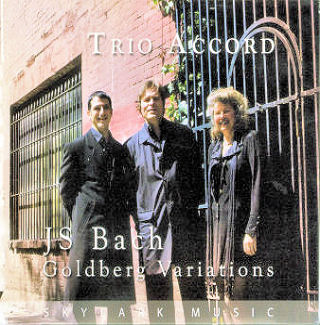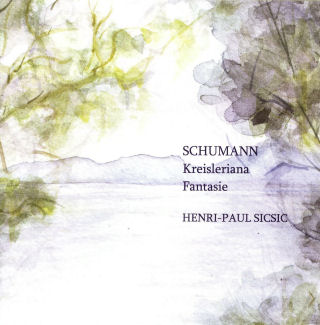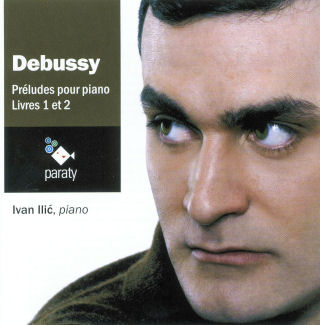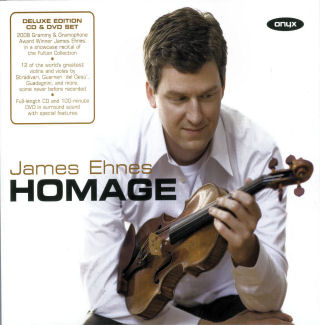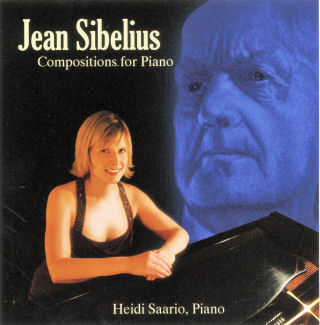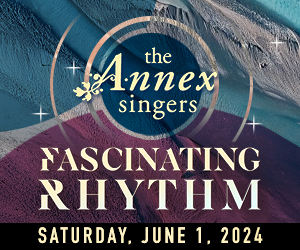Early, Classical and Beyond: June 09
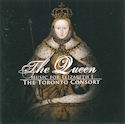 The Queen - Music for Elizabeth I
The Queen - Music for Elizabeth I
Toronto Consort
Marquis 81387 (www.marquisclassics.com)
In light of the recent revival of popular interest in “The Tudors”, this is a most timely release for the Toronto Consort. Following on the heels of recent staging of this repertoire, the CD is beautifully performed with exquisite sound engineering by Ed Marshall. As ever, in the pursuit of historical authenticity, director David Fallis has been thorough in his research, to the point of engaging Professor David Klausner of the University of Toronto to assist with Elizabethan pronunciation, a feature that is most engaging in and of itself. The spirit of the Elizabethan court is recaptured with its love for music, dancing, playfulness and glorification of heroic exploits, realm and monarch, with selections by Dowland, Morley, Campion, Byrd and others interspersed with traditional English music in unique arrangements by Fallis and other members of the consort. Featuring a uniquely English combination of instruments called the “mixed consort”, consisting of lute, bandora, cittern, viola da gamba, flute and violin along with recorder and harpsichord, the accompaniments and instrumental selections are as hearty and multi-layered as the part-singing throughout. With too many wonderful solo performances to single out in these brief pages, let us simply praise the performance as being as glorious and as charming as Oriana herself!
Dianne Wells
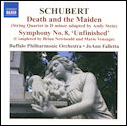 Schubert - Death and the Maiden;
Schubert - Death and the Maiden;
Symphony No.8
Buffalo Philharmonic Orchestra;
JoAnn Falletta
Naxos 8.572051 ![]()
At Grigorian.Com
Naxos brings us two ‘new’ symphonic works by Schubert: a transcription of a major chamber work and another attempt to solve the enigma of the Unfinished Symphony.
American musician Andy Stein’s full orchestration of the Death and the Maiden string quartet is quite striking and works extremely well, supporting his view that the quartet is arguably Schubert’s greatest large-scale composition, and successfully realizes his desire to create a late Classical/early Romantic symphony out of it. The instrumental scoring is idiomatic and highly effective, and there is excellent balance and contrast between the strings, brass and woodwind.
Less successful - or, at least, less satisfying - is the completed version of the Unfinished Symphony, perhaps because our familiarity with the original makes it virtually impossible to listen objectively to any additions. Over the past 140 years there have been countless attempts to complete the work. This version has a reconstruction of the Scherzo - based on Schubert’s own sketches - by the English Schubert scholar Brian Newbould, together with a Finale assembled by the Swiss conductor Mario Venzago which combines extracts from Schubert’s Rosamunde incidental music with the same work’s Entr’acte, which some historians believe may have been intended as the original Finale for the symphony. It’s an impressive and credible attempt at doing the impossible perhaps, but fails to address the fundamental question with projects like this – “Why even try?”
Apparently recorded live in concert, the BPO and Falletta deliver performances full of passion and conviction.
Terry Robbins
Yuja Wang
Deutsche Grammophon 477 8140 ![]()
At Grigorian.Com
Among those joining the line of gifted young pianists emerging from China is Yuja Wang, a 22 year old from Beijing, now living in New York. A graduate of the Beijing Conservatory and the Curtis Institute, Wang made her debut at 16 with the Tonhalle Orchestra in Zurich with David Zinman - and this new CD, the first of five to be recorded for Deutsche Grammophon, is ample evidence of her talents.
An eclectic collection, it features music by Chopin, Ligeti, Scriabin and Liszt. From the beginning, it’s clear that Ms. Wang possesses a dazzling technique – little wonder she chose such demanding repertoire! Yet at the same time, fast fingers shouldn’t be an end unto themselves. For example, I found the opening movement of the Chopin piano sonata in B flat minor a little disconcerting – never have I heard it played so briskly. Surely, a musical depiction of a race-horse is not what Chopin had in mind! On the other hand, the lyrical and introspective opening movement of the Scriabin Piano Sonata #2 is approached with great sensitivity. Two etudes by Ligeti may seem an odd choice on a disc of Romantic repertoire, but it is their very nature of contrast (#4 even hinting at the style of jazz pianist Thelonious Monk) that Wang decided to include them. Rounding out the disc is the great Liszt B minor piano sonata, a true tour de force. Not surprisingly, she has full command of this most challenging work – those thundering octaves and arpeggios roll off her hands with apparent ease.
This is indeed an impressive first disc by a young artist to watch out for in years to come. But for her next recording, may I suggest a little less bravura and a little more poetry?
Richard Haskell
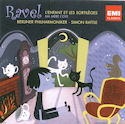 Ravel - L’Enfant et les Sortilèges;
Ravel - L’Enfant et les Sortilèges;
Ma Mère L’Oye
Berliner Philharmoniker; Sir Simon Rattle
EMI Classics 2 64197 2 ![]()
At Grigorian.Com
The plot of Ravel’s “lyric fantasy” The Child and the Magic Spells involves a petulant boy who trashes his room, which then comes to life to haunt him. Chairs spring to life, teapots foxtrot, and cats come a-courtin’ in this beautifully orchestrated and endlessly imaginative work. Originally intended as a ballet, the scenario was first conceived in 1914 by the popular French novelist Colette following the birth of her only child. The vocal element only came into play later when she began to collaborate with Ravel in 1917. The score was completed in 1925. As it involves a large orchestra, 21 characters and extensive choreography and costuming, it is rarely heard despite Ravel’s otherwise solid presence in the standard repertoire. Sir Simon Rattle is fully in his element here (he first conducted this work at the age of 19) and the orchestra responds brilliantly. Magdalena Kožena as the Child leads an accomplished ensemble of singers ably backed by the outstanding contribution of the Berlin Radio Chorus. The recording is seamlessly patched together from live performances in September 2008 at Berlin’s Philharmonie Hall; an array of microphones suspended over the orchestra provides pin-point detail while sacrificing a degree of acoustic depth. The heightened sonic presence succeeds admirably in the accompanying Mother Goose, which features many gorgeous instrumental solos cushioned by the renowned deep velvet of the Berlin strings. Full texts and translations are provided in a 60-page booklet. An excellent release, not to be missed.
Daniel Foley
Band of the Royal Regiment of Canada and Guests
Royal Regiment of Canada RRC007
(www.band.rregtc.ca)
As was the case with this band’s previous recording, this offering includes a potpourri of selections by the band and guests. In the limited space of a review it is not possible to discuss all of the selections included. For me, the highlight of this CD is the First Suite in E flat by Gustav Holst. Lamenting the dearth of major works for concert band, other than transcriptions from orchestral scores, officials of the Royal Military School of Music at Kneller Hall commissioned Holst to write two major works in the early 1920’s. Under the baton of Major Paul Weston, formerly of the Royal Marines, this performance of the first of these suites captures all of the many nuances the music requires.
Compositions by both conductors are also included. Promenade, the title number on this CD by Music Director, Lt. William Mighton leads the listener along a number of light-hearted musical pathways. In contrast Defence of the Realm by Associate Director, Major Paul Weston, is a “Fanfare March” with a much stronger and determined drive.
Two other numbers which particularly appealed to me were the traditional arrangement of The Holy City with a stunning euphonium solo by Roman Yasinsky and the superb Sammy Nestico arrangement of All Through the Night.
Also included are a medley of Songs of the Forties featuring vocalist Danielle Bourré, the Alford march The Vanished Army and a variety other British and Canadian traditional and contemporary selections.
Jack McQuarrie
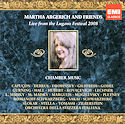 Martha Argerich and Friends - Live from the Lugano Festival 2008
Martha Argerich and Friends - Live from the Lugano Festival 2008
Martha Argerich and Friends
EMI Classics 2 67051 2 ![]()
At Grigorian.Com
Ah, Martha! What an icon she has become ever since she burst onto the scene in 1965, her supreme musicality combining a flamboyant life both on and off the stage! (I well remember a Montreal Symphony Orchestra concert I attended years ago where she was soloist, appearing in a dress not in concert-hall black, but fire-truck red!)
The Progetto Martha Argerich (Martha Argerich Project) is an annual event now in its eighth consecutive year which runs for three weeks every June as part of the festival held in Lugano, Switzerland. As artistic director, Argerich gathers together some of the finest artists in the world for three weeks of superb chamber-music and what better way than to capture the magic from 2008 than on this 3-disc EMI recording? Indeed, the wonderfully wide range of material contained within is a treat! It includes piano duos, chamber trios, quartets, a concertino for 7 instruments, and even a short suite for two pianos and chamber orchestra by pianist Mikhail Pletnev. Composers range from Arensky (the Piano Quintet Op.81), and Dvorak (a set of 4 Slavonic Dances) to Ravel (an arrangement of his Introduction and Allegro for two pianos) and Piazzolla (two suites). Many of the performers involved are well-known musicians with whom Argerich has had long-standing professional relationships, such as cellist Misha Maisky and violinist Renaud Capuçon. Others are less familiar, such as clarinettist Corrado Giufreddi and bassoonist Vincent Godel. Not surprisingly, the level of performance is consistently high throughout, and despite these being live performances, audience noises are kept to a minimum.
In all, these three discs comprise some very fine music-making, featuring a worthy blend of well-known pieces with those which are decidedly less familiar. It’s almost as good as being there! Recommended.
Anne Sophie von Otter; Concerto Copenhagen; Lars Ulrik Mortensen
Archiv Produktion 447 7467 ![]()
At Grigorian.Com
First loves are hard to live down – the memories linger and grow more beautiful with time, yet when confronted with reality they often seem puzzling. Such is the case with this recording. J. S. Bach’s music was the first love and first repertoire tackled by the young and promising and at that time completely unknown Swedish soprano, Anna Sofie von Otter. Now, years later, the promise borne out by a great career and international fame, von Otter returns to Bach – with mixed results. To be sure, Bach has not changed (beautifully played here by Concerto Copenhagen) – von Otter has. This extremely talented and versatile mezzo has travelled very different musical grounds over the years. So different, in fact, that the precise and unyielding music of the Baroque master, especially in the excerpts from the cantatas, presents an unexpected hurdle for von Otter. Her phrasing betrays her many years spent not singing the music of the Baroque. And yet, even in this suddenly unfamiliar territory, the beauty of her voice shines in the Magnificat, the Mass in B minor and the St. Matthew Passion. That last one was the music of her original breakthrough, a solo concert in Stockholm years ago. Listening to these parts of the album, one easily understands and appreciates the allure of the first love.
Chiara Massini (harpsichord)
Symphonia SY 06222 (www.chiaramassini.com)
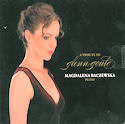 A Tribute to Glenn Gould
A Tribute to Glenn Gould
Magdalena Baczewska
holoPhon LC9112 (www.magdalenabaczewska.com)
Chiara Massini’s 2007 recording of the Goldberg Variations on harpsichord is a triumph on many levels. On the surface, the bravado of her playing surprises and delights at every turn, especially impressive in the strong drive of the left hand and exciting forward motion of each variation. Digging a little deeper, the care taken to present each variation as a unique entity reveals a great deal of thought and understanding of rhythmic and harmonic structure. Happily, she repeats each “A” and “B” section - I always wondered if Glenn Gould’s decision to play the aria and each variation “AAB” was in order to keep the length of the performance to within one LP (i.e. the market dictated). On the deepest level, her playing is disciplined, controlled and unromantic which is such a breath of fresh air. Her interpretation, as it were, is to present the piece as written, with exquisite ornamentation, brilliant sense of line and a deep understanding of the way the piece is put together.
In the liner notes to her tribute to Glenn Gould the gifted pianist Magdalena Baczewska makes clear her indebtedness to the recordings of the Canadian icon. She dedicates the recording to this “extraordinary musician and thinker” and urges the listener to “spend an hour with some of the most beautiful music ever written”. Her program – the Goldberg Variations and the Strauss Sonata op. 5 – leaves the listener no option but to compare her playing to Gould’s yet, not surprisingly, they are worlds apart. Gould described the Goldbergs as “unity through intuitive perception, unity born of craft and scrutiny, mellowed by mastery achieved, and revealed to us here, as so rarely in art, in the vision of subconscious design exulting upon a pinnacle of potency”. Baczewska plays it all very beautifully, but with little regard for the structure, hierarchy or counterpoint of the piece, begging the question of what she learned, if anything, from Gould's playing. Her Strauss is lyrical, at times majestic, at others intimate and delicate. It comes off much more successfully than the Bach and redeems the “tribute”.
Spanish Brass
Marquis 81505 (www.marquisclassics.com)
Toronto record label Marquis has made a welcome addition to their fledgling brass repertoire offerings with this 2 CD compilation of tracks from the discography of The Spanish Brass, better known in Spain as Luur Metalls. Formed in 1989 and touring internationally ever since, they have released some nine albums on private labels over their busy career, assembled here for their 20th anniversary. A brass quintet of great virtuosity and a keen sense of ensemble, their repertoire features many arrangements of Spanish classics by the likes of Albeniz, Turina and de Falla along with original compositions by lesser known composers, represented here by the intriguing polystylism of the Suite Americana by the Uruguayan-American Enrique Crespo (who, incidentally, is the founder of the German Brass ensemble). The album gets off to a rather bland start with the inclusion of two lengthy Bach arrangements and ends quite disappointingly with a series of hackneyed Christmas medleys involving the Orfeo Valencia Navarro Reverter chorus, but fortunately the bulk of the program is quite invigorating and the performances throughout are excellent. I would have preferred to hear a few samples of the less commercial works in their repertoire, which according to their web site (www.spanishbrass.com) includes works by Berio and Lutoslawski. No information is provided for the sources or producers of the various tracks, though solid production values are quite consistent throughout.


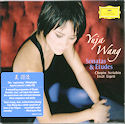
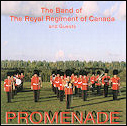
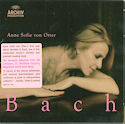
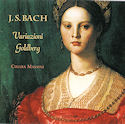
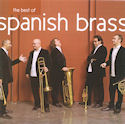
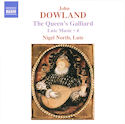
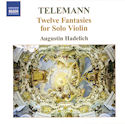
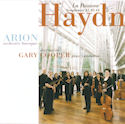
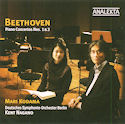
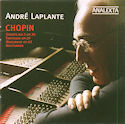
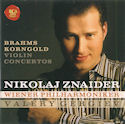
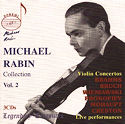
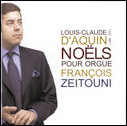
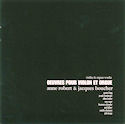 Ouvres pour Violon et Orgue
Ouvres pour Violon et Orgue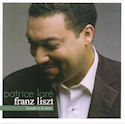
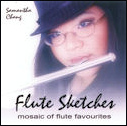
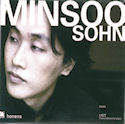
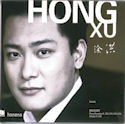
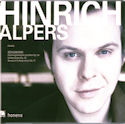
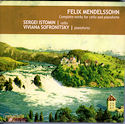 Mendelssohn - Complete works for cello and pianoforte
Mendelssohn - Complete works for cello and pianoforte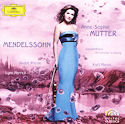 Mendelssohn - Violin Concerto;
Mendelssohn - Violin Concerto;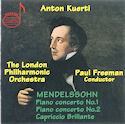 Mendelssohn - Piano Concertos
Mendelssohn - Piano Concertos